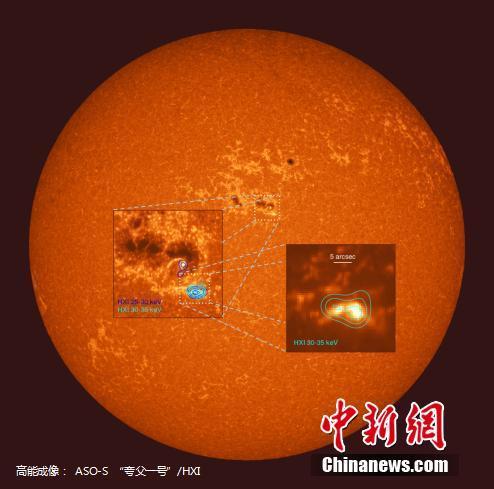
The hard X-ray of a C-class solar flare (in squares) captured by China's ASO-S' HXI on November 11, overlaid on the imaging of the sun's atmosphere, or chromosphere (bottom), observed by NASA's Solar Dynamics Observatory (SDO) imaged at the same time. (Photo provided by Purple Mountain Observatory Chinese Academy of Sciences)
China's solar exploration satellite transmitted its first solar image since being sent to space in October. The Advanced Space-based Solar Observatory (ASO-S) -- nicknamed Kuafu-1 in Chinese -- sent hard X-ray imaging (HXI) of solar flares that broke out at 1:00 a.m. (Universal Time) on Nov. 11, 2022.

A comparison of the monochromatic images filmed by the Full-disk solar vector MagnetoGraph (FMG) on the Earth and by the FMG in orbit. (Photo provided by Purple Mountain Observatory Chinese Academy of Sciences)

A comparison of images of the longitudinal magnetic flux of the Sun that the FMG obtained and captured by HMI/SDO of the U.S. on Nov. 6, 2022. (Photo provided by Purple Mountain Observatory Chinese Academy of Sciences)
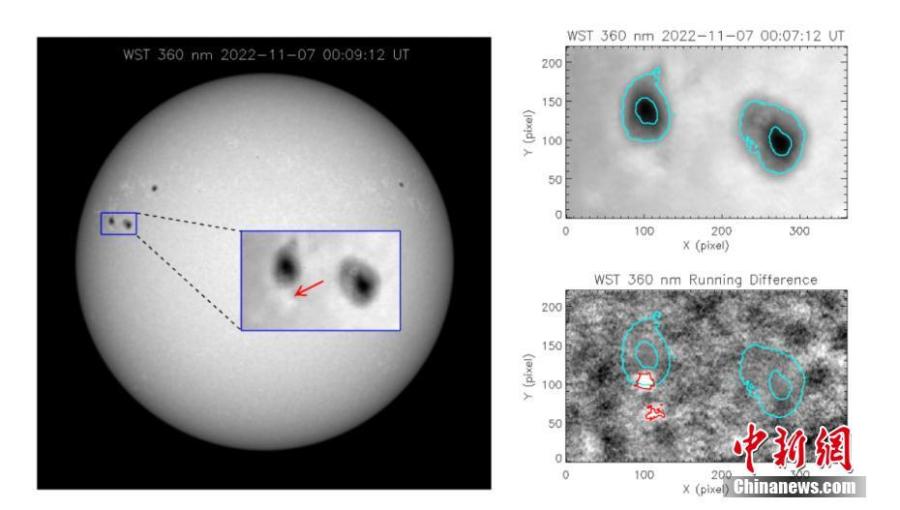
A rare white-light flare at the edge of the Sun, which proved the capacity of observation on the Lyman-alpha band on Nov. 7, 2022. The Lyman-alpha telescope(LST), the third payload that the satellite carries, consists of a Solar Disk Imager (SDI), a Solar Corona Imager (SCI) and a full-disk White-light Solar Telescope (WST). (Photo provided by Purple Mountain Observatory Chinese Academy of Sciences)
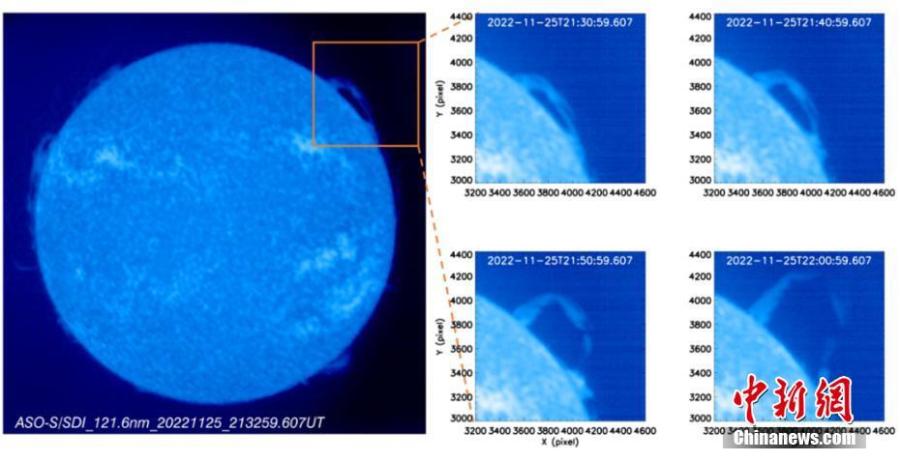
An eruptive solar prominence filmed by a sub-payload of the LST on November 25, 2022. (Photo provided by Purple Mountain Observatory Chinese Academy of Sciences)
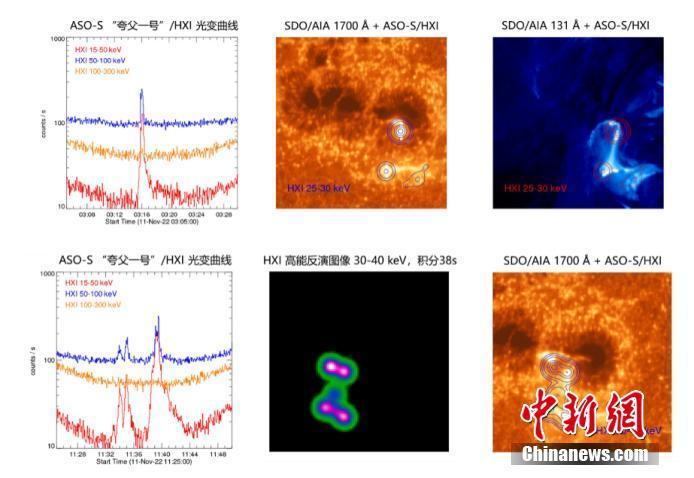
Photo shows the solar flares captured by China's ASO-S' HXI on November 11. (Photo provided by Purple Mountain Observatory Chinese Academy of Sciences)
















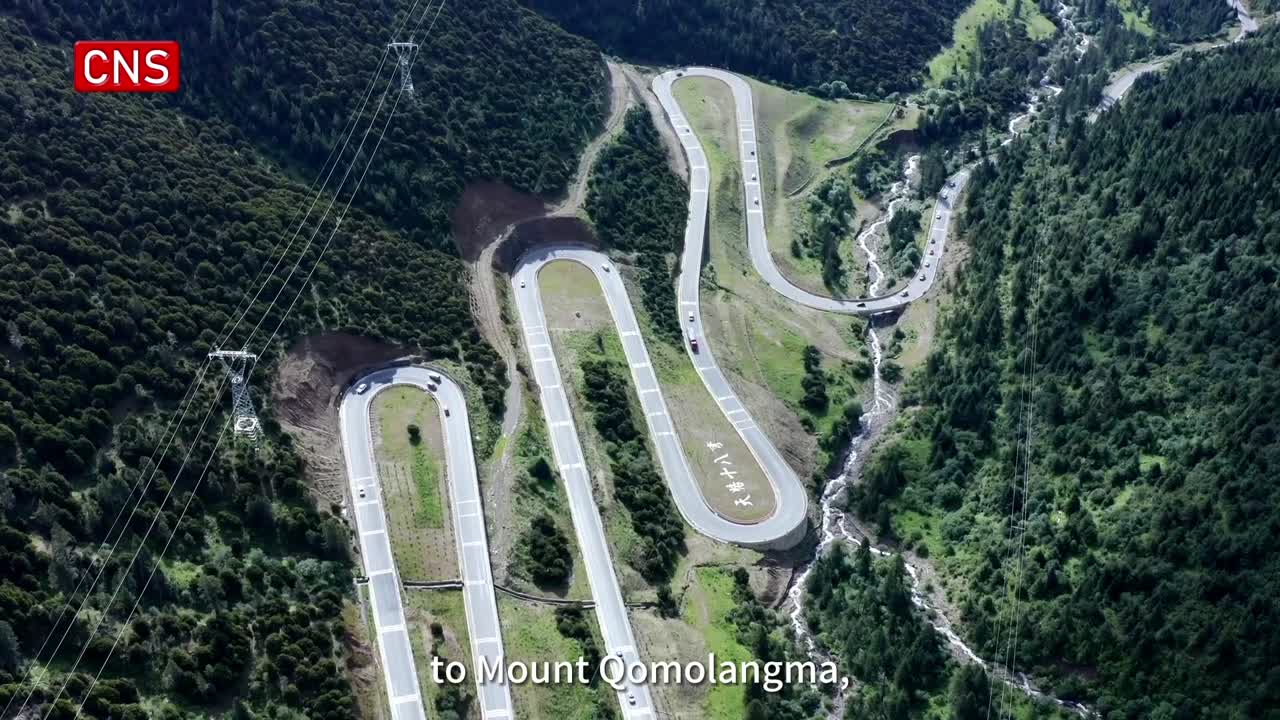



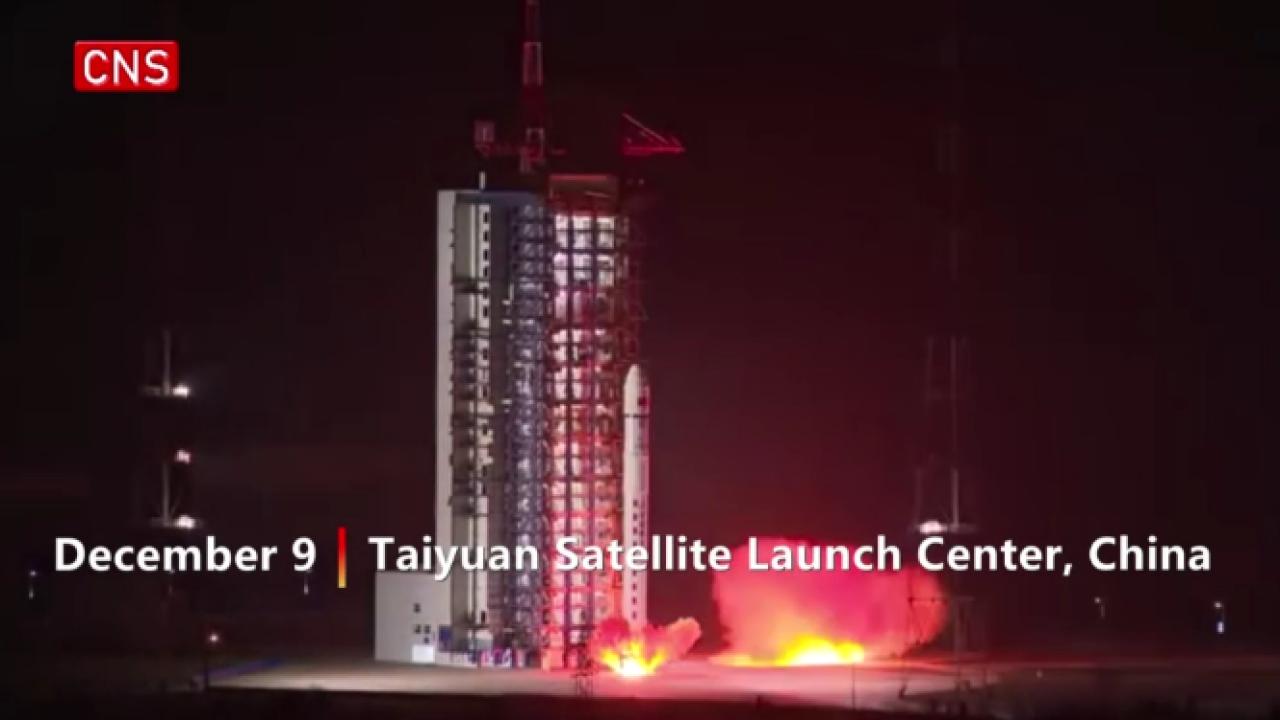
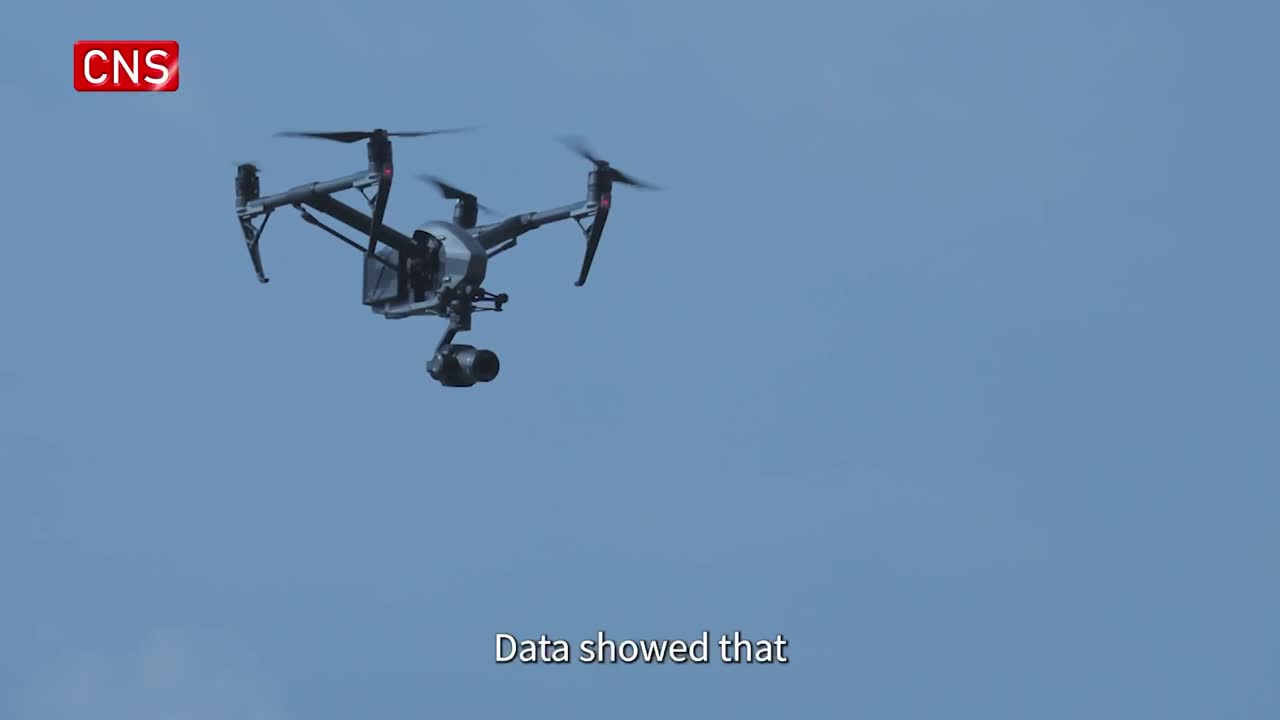
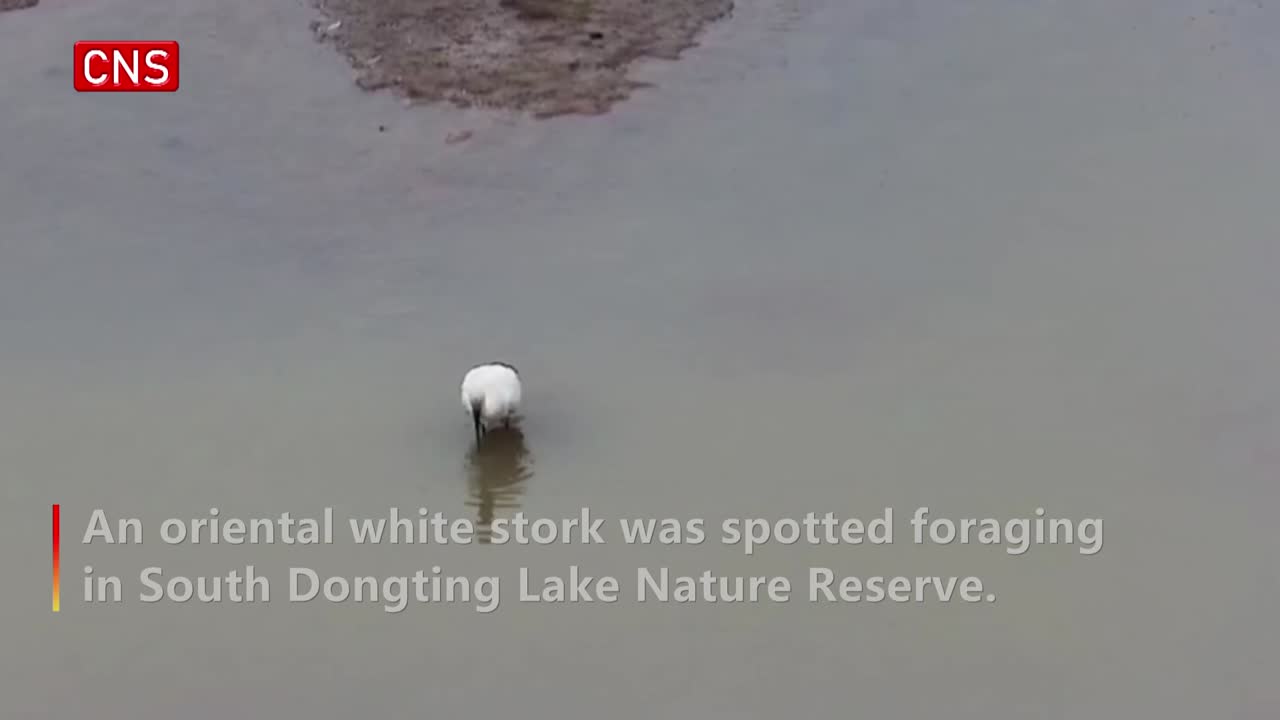
 京公网安备 11010202009201号
京公网安备 11010202009201号